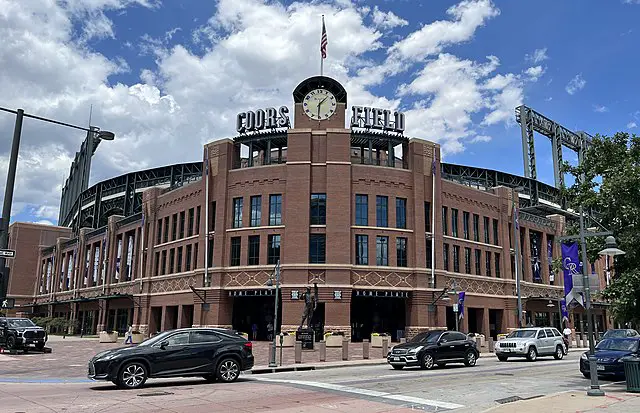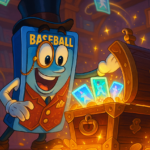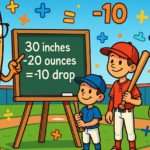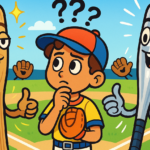Last Updated on October 7, 2024 by Matt Musico
When fans head to a stadium to catch an MLB game, the things they’d like to see over nine innings can vary. More often than not, though, people want to see a home run or two. After all, it’s one of the most exciting plays in baseball (if you ask me). So, that also got me wondering — which stadiums are the best MLB ballparks for home runs?
Certain venues have built up a reputation for being more hitter-friendly than others. But do the stats/analytics still back those assumptions up?
I took some time to look at Statcast’s Park Factors Leaderboard for the past half-decade to see where homers are most frequent around the league.
Disclaimer: This article includes affiliate links. I may receive a commission for any purchases made after clicking them.
What Is the Best MLB Stadium for Home Runs?
According to Statcast’s Park Factors, Great American Ball Park — home of the Cincinnati Reds — is the best MLB stadium for home runs.
Best MLB Ballparks for Home Runs
Factors Affecting Home Runs
One of the beautiful things about baseball is that every MLB ballpark is unique. Sure, all the bases are 90 feet apart and all the mounds are 60 feet, 6 inches from home plate. But beyond that, there are nooks, crannies, and quirks that only happen at certain parks.
With that said, several factors can impact how frequently home runs are hit during games. You’ll find five of them below.
Altitude
Ballparks located at high altitudes, such as Coors Field in Denver, tend to have more home runs due to the thin air. The ball travels farther in the thin air, making it easier for players to do some yard work.
Let’s also not forget the ridiculous two-game series the San Diego Padres and San Francisco Giants played in Mexico City in 2023, as well. Coors sits 5,200 feet above sea level, while Estadio Alfredo Harp Helu is a whopping 7,349 feet above sea level.
Outfield Dimensions
The distance from home plate to the outfield walls can also influence the number of home runs that are slugged. Ballparks with shorter outfield walls, such as Yankee Stadium, tend to have more home runs.
Wind
The direction and speed of the wind can also impact the number of home runs hit during a game. A tailwind can help carry the ball over the outfield wall, while a headwind can make it more challenging to hit a home run.
Temperature and Humidity
Warmer temperatures and higher humidity levels can cause the ball to travel farther, making it easier for players to hit home runs.
Pitching
Ballparks with weaker pitching staffs may see more home runs than ballparks with stronger pitching staffs. Why do you think MLB bettors and daily fantasy players like loading up on opposing hitters when they play the Rockies at Coors Field?
What is Statcast’s Park Factors Metric?
There are a handful of websites on the interwebs that evaluate how hitter-friendly or pitcher-friendly a big-league park is. I decided to go with Statcast’s metric because their data is commonly used throughout the league and among fans.
Here’s the explanation behind how they compiled data to present for park factors, straight off the website:
Statcast park effects show the observed effect of each displayed stat based on the events in the selected park. Each number is set so that “100” is average for that metric, and the park-specific number is generated by looking at each batter and pitcher, controlled by handedness, and comparing the frequency of that metric in the selected park compared to the performance of those players in other parks.
For example, the 135 HR mark for 2018-2020 at Great American Ball Park does not mean the Reds hit 35% more home runs at their home park. It means for batters and pitchers who played both at GABP and elsewhere, 35% more home runs were observed at GABP.
What I like about Statcast’s Park Factors is that they also include a three-year rolling average. So, if a park was quite homer-friendly one year but it typically isn’t, that will show up in the stats. Each three-year rolling average displays data from the selected year and the two prior. So, if I have “2024” selected, it will display data from 2022-24. If I have “2022” selected, it will show data from 2021-23.

Which Are The Best MLB Ballparks for Home Runs?
MLB’s 2024 regular season is officially in the books. With that, check out the below list, which is the best 15 ballparks in baseball for home runs. This is for the rolling three-year average between 2022 and 2024. I’ve included the rating just for fun:
- Great American Ball Park (Cincinnati Reds): 128
- Dodger Stadium (Los Angeles Dodgers): 122
- Yankee Stadium (New York Yankees): 119
- Globe Life Field (Texas Rangers): 115
- Citizens Bank Park (Philadelphia Phillies): 114
- American Family Field (Milwaukee Brewers, but it’ll always be Miller Park to me): 114
- Angel Stadium (Los Angeles Angels): 112
- Coors Field (Colorado Rockies): 109
- Minute Maid Park (Houston Astros): 107
- Truist Park (Atlanta Braves): 105
- Target Field (Minnesota Twins): 105
- Petco Park (San Diego Padres): 104
- Rogers Centre (Toronto Blue Jays): 103
- Nationals Park (Washington Nationals): 101
- Citi Field (New York Mets): 99
Here’s what the three-year rolling average is for the top 15 ballparks during 2021-23.
- Great American Ball Park: 131
- Dodger Stadium: 122
- Yankee Stadium: 116
- Citizens Bank Park: 113
- Angel Stadium: 112
- Globe Life Field: 111
- Truist Park: 111
- American Family Field: 109
- Coors Field: 108
- Nationals Park: 107
- Wrigley Field: 106
- Oriole Park at Camden Yards; 104
- Guaranteed Rate Field: 104
- Rogers Centre: 104
- Target Field: 104
While the order looks quite different in a few spots, both of these lists mostly contain the same general cast of characters. So, it’s quite obvious where the best places are around Major League Baseball when it comes to home runs taking place.
How Many MLB Ballparks Have You Been To?
A common bucket list task for mlb fans is to see a Major League Baseball game played at every active park. I’m no different. I don’t care if I’m sitting in the upper deck, have to deal with blinding sun and heat, or can be protected by a retractable roof — getting to experience a ballgame at every stadium just sounds incredibly appealing to me.
The ultimate bucket list scenario for me is to buy a trailer/RV and go stadium-hopping across the country over the summer. One day that’ll happen. Whenever it does, it will hopefully not be my first time at each stadium.
As it currently stands, I’ve been to 17 active MLB parks:
- American Family Field
- Citi Field (to see my beloved New York Mets)
- Citizens Bank Park
- Comerica Park (Detroit Tigers)
- Coors Field
- Fenway Park (Boston Red Sox)
- Great American Ballpark
- loan Depot park (Miami Marlins)
- Nationals Park
- Oakland Coliseum (Oakland Athletics)
- Oracle Park (San Francisco Giants)
- Oriole Park at Camden Yards
- PNC Park (Pittsburgh Pirates)
- Progressive Field (Cleveland Guardians)
- Tropicana Field (Tampa Bay Rays)
- Wrigley Field
- Yankee Stadium
I like to try attending a game during the Major League Baseball season at a place I haven’t yet visited each year. So far for the 2024 season, I’ll be adding Dodger Stadium as no. 18.
Trying to pinpoint the best MLB ballpark I’ve been to so far is tough because they’re each excellent in their own way. Citi Field is a favorite because I love the Mets and I live close to the park. Fenway Park is always fun, especially since it’s the league’s oldest stadium. I think Oracle Park and PNC Park have the best views (while Coors Field is up there, too). I’ve enjoyed pregame festivities the most at Citizens Bank Park, Camden Yards, and Nationals Park.
The most interesting experience I had was at the Coliseum. I watched a game there in 2012 while on a work trip. Tickets were cheap, so I made a last-second decision to go. Although traffic on the Bay Bridge forced me to get there right before first pitch, I parked right next to the stadium and walked in without trouble. I also had an entire section to myself in center field, which was an interesting experience.
The most unexpectedly great experience I had was at Tropicana Field. It’s probably because I went into it with absolutely no expectations. However, I enjoyed watching the game itself and there were fun activities within the park to spend some time. I would definitely go back whenever I get the chance again.
Ways You Can Get In On The Action
There’s one very obvious way you can take advantage of this newfound information. But, there is more than one way.
That obvious one I mentioned? That’d be going to a game at one of these ballparks that are most conducive to dingers. The above links on each of the stadium names will bring you to landing pages for tickets to peruse from Vivid Seats.
If seeing games played at these stadiums in person is something you’re looking to do, it’s a good idea to keep track of your travels. I have two products in the Daily Dingers Etsy Shop that can help with this. One is an MLB Ballpark Map poster showing where all the stadiums are on a map of the United States. The other is a simple checklist that also includes addresses for all 30 stadiums.
Want to see some homers in person this season? Of course you do. Grab MLB tickets from our friends at Vivid Seats. And before you get to the stadium, make sure you’re decked out in the right gear. Get your favorite team’s official merch from the MLB Shop or a ‘Big Dinger Energy’ shirt from our apparel store.





Leave a Reply